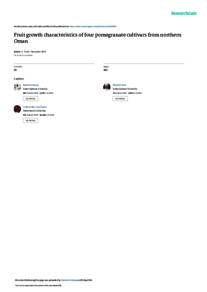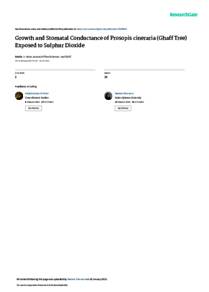Document
Fruit growth characteristics of four pomegranate cultivars from Northern Oman.
Identifier
DOI: 10.1051/fruits/2009029
Contributors
Al-Said, Fahad., Author
Opara, Linus., Author
Publisher
Elsevier.
Gregorian
2009-11
Language
English
Subject
English abstract
Introduction. Pomegranate (Punica granatum L.) is the main and most valuable fruit crop of the northern mountainous region of Oman. Pomegranates are cultivated utilizing traditional farming methods including the determination of harvest dates, harvesting and postharvest handling. Materials and methods. Fruit of four native pomegranate cultivars ['Hamedh', 'Malasi', 'Helow' and 'Qusum', literally translated as sour, smooth, sweet and hard-seeded, respectively] were tagged and monitored for 3 months up to commercial harvest. Fruit length (L) and diameter (D) were measured at weekly intervals starting from 66 d after full bloom until harvest (136 d after full bloom). Results and discussion. During the time course of fruit growth and development, significant changes occurred in fruit shape assessed by the [fruit length / fruit diameter] ratio in two cultivars ('Malasi' and 'Hamedh'), but not in the 'Helow' and 'Qusum' cultivars, which also had larger fruit size at harvest. The lack of obvious changes in fruit shape during growth and development of 'Qusum' and 'Helow' pomegranate cultivars indicates that the attainment of characteristic fruit shape may not be a good indicator of their maturity for harvest management. Thus, fruit harvesting based solely on size and shape is not sufficient and other physico-chemical fruit attributes should be taken into account when assessing readiness to harvest to ensure optimum income returns to growers.
Member of
ISSN
0248-1294
Resource URL
Category
Journal articles


